
Detail of the Sistine Chapel painting, fresco by Michelangelo Buonarroti. Prophets and sibyls are titanic images of people of great strength of passions and brightness of characters. The wise concentration of Joel is opposed to the apocalyptic, perplexed Ezekiel; the stunning image of Isaiah, depicted in moments of contemplation, is contrasted with violent Daniel, – the young prophet is presented making records while reading, but all his movements are so energetic and swift that this seemingly insignificant motive is transformed by Michelangelo’s brush into an inspired creative act.
The Kuma Sibyl is endowed with superhuman strength and extraordinary masculinity; it seems that she belongs to a tribe not of people, but of giants; on the contrary, the Delphic Sibyl depicted at the moment of divination is young and beautiful, her eyes are wide open, the whole look is full of inspired fire. Finally, the most tragic image of the mural is the prophet Jeremiah, immersed in sorrowful hard thinking. On the hanging scroll are placed the initial letters of his prophecies: “The mistress of nations became a widow; the sovereign of the regions fell under the yoke. And her splendor left her daughter Zion.”
The image of Jeremiah was Michelangelo Buonarroti’s immediate response to the calamities that Italy was experiencing. It is indicative that even the characters performing auxiliary and decorative functions in Michelangelo Buonarroti’s painting, are endowed with the fullness of figurative and emotional expressiveness.
In the figures of naked young men, the so-called slaves located in the corners of plot compositions, Michelangelo embodied such unbridled joy and fullness of life, unfolded such a wealth and variety of plastic motifs that, without these figures, the painting would have lost a significant share of the excitement of excitement from it.
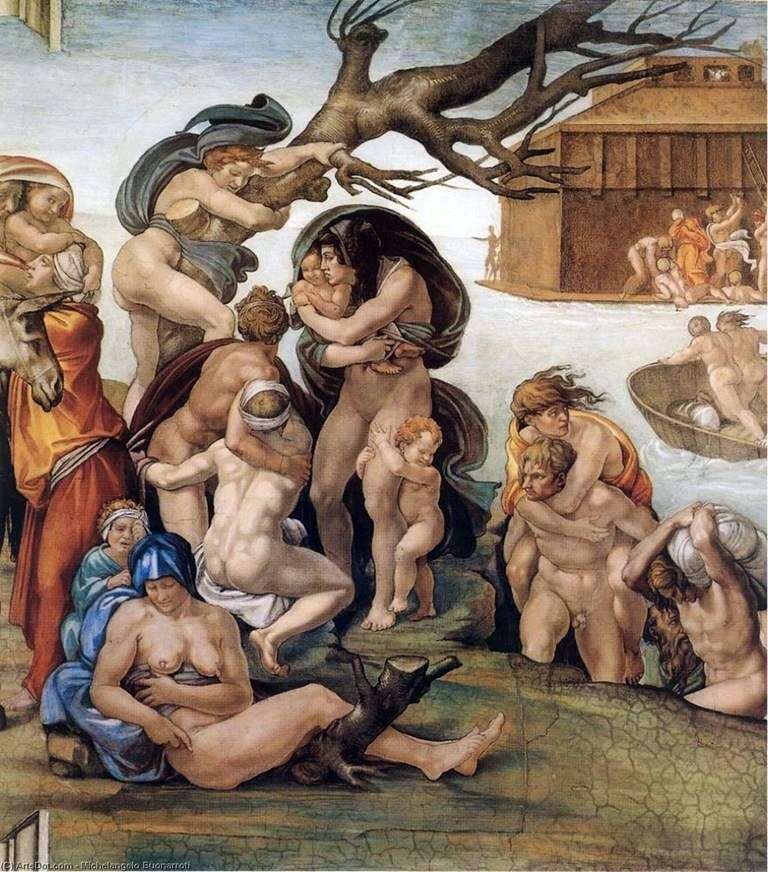 Flood, a fragment of the painting of the Sistine Chapel (fresco) by Michelangelo Buonarroti
Flood, a fragment of the painting of the Sistine Chapel (fresco) by Michelangelo Buonarroti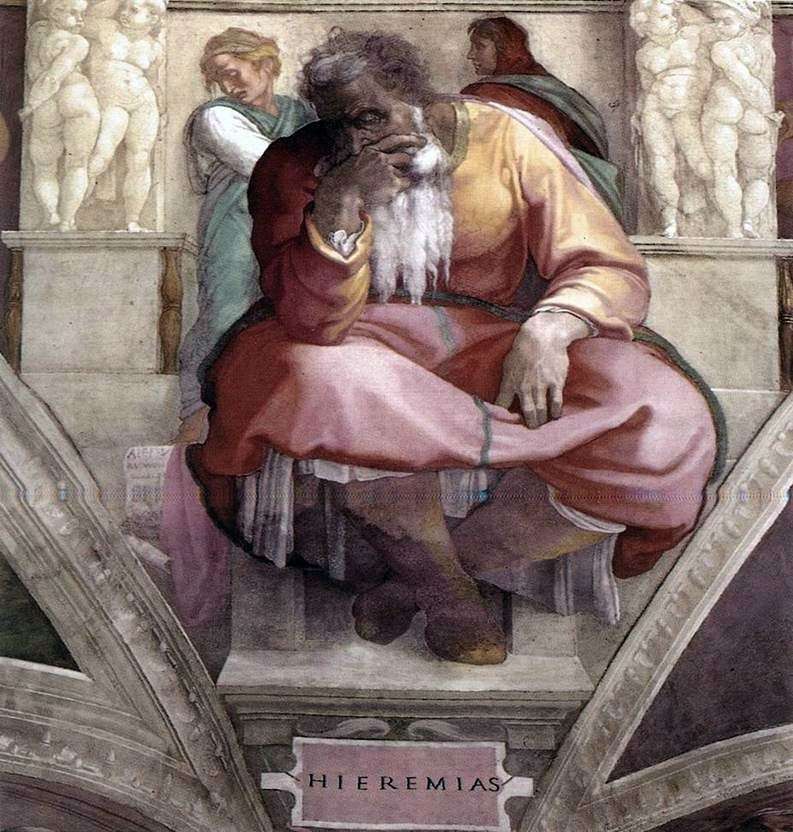 The Prophet Jeremiah (Fresco) by Michelangelo Buonarroti
The Prophet Jeremiah (Fresco) by Michelangelo Buonarroti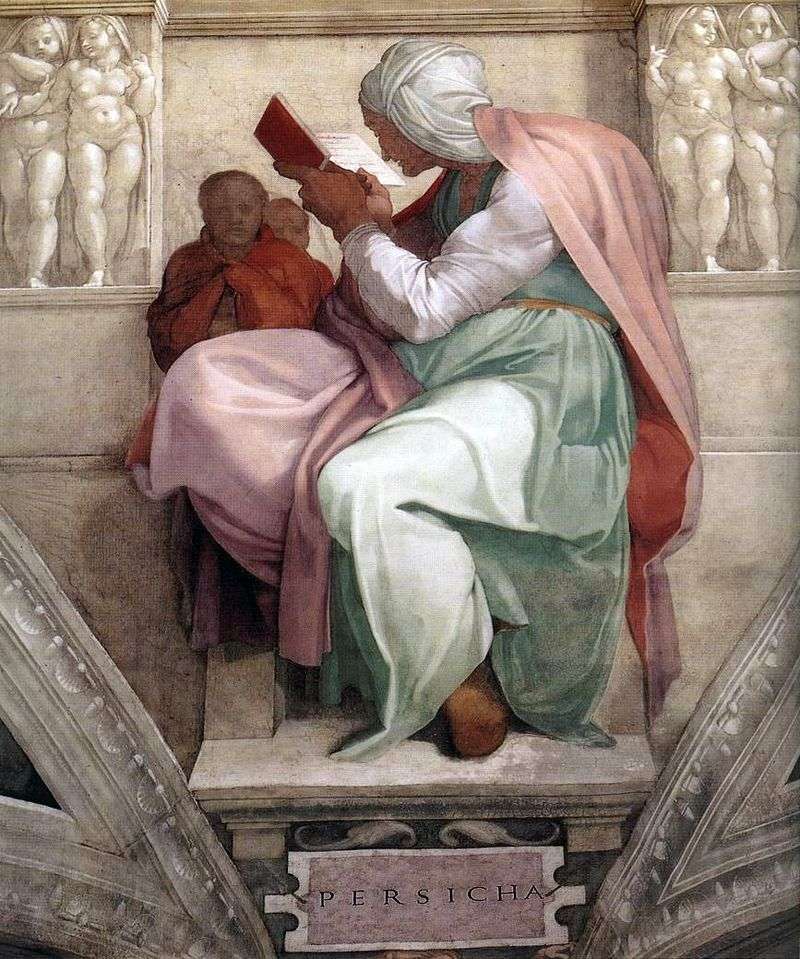 Persian Sibyl (fresco) by Michelangelo Buonarroti
Persian Sibyl (fresco) by Michelangelo Buonarroti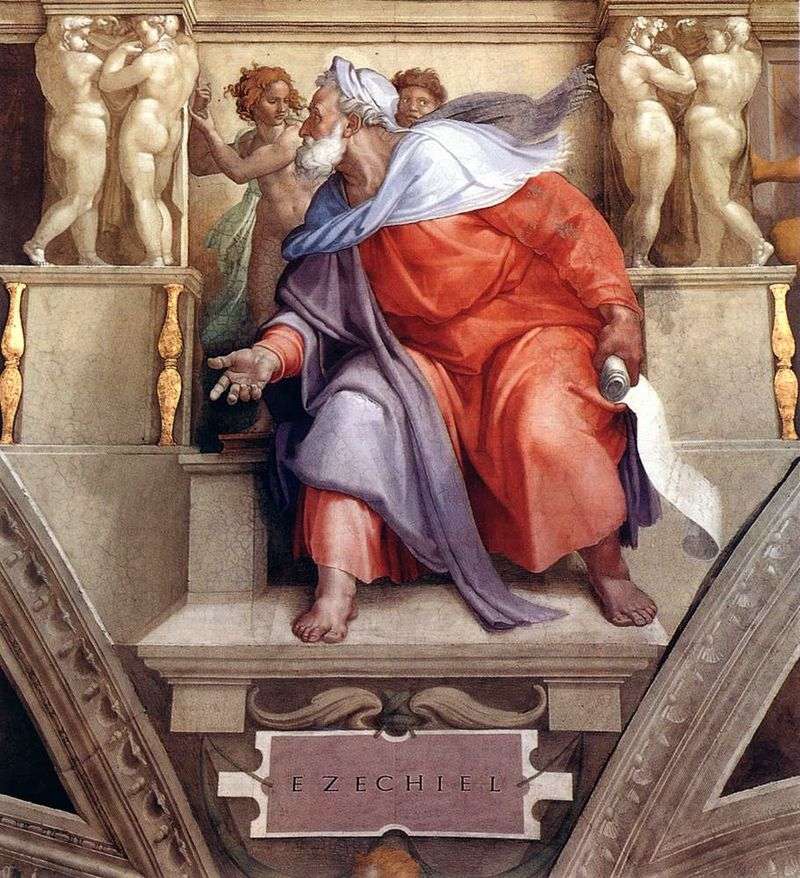 The Prophet Ezekiel (Fresco) by Michelangelo Buonarroti
The Prophet Ezekiel (Fresco) by Michelangelo Buonarroti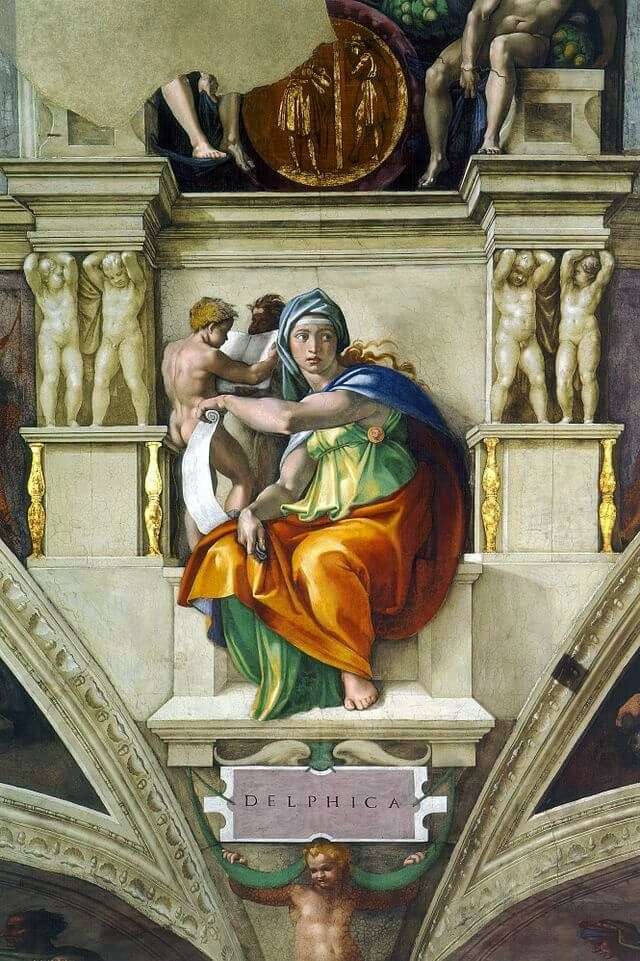 The Delphic Sibyl by Michelangelo Buonarroti Buonarroti
The Delphic Sibyl by Michelangelo Buonarroti Buonarroti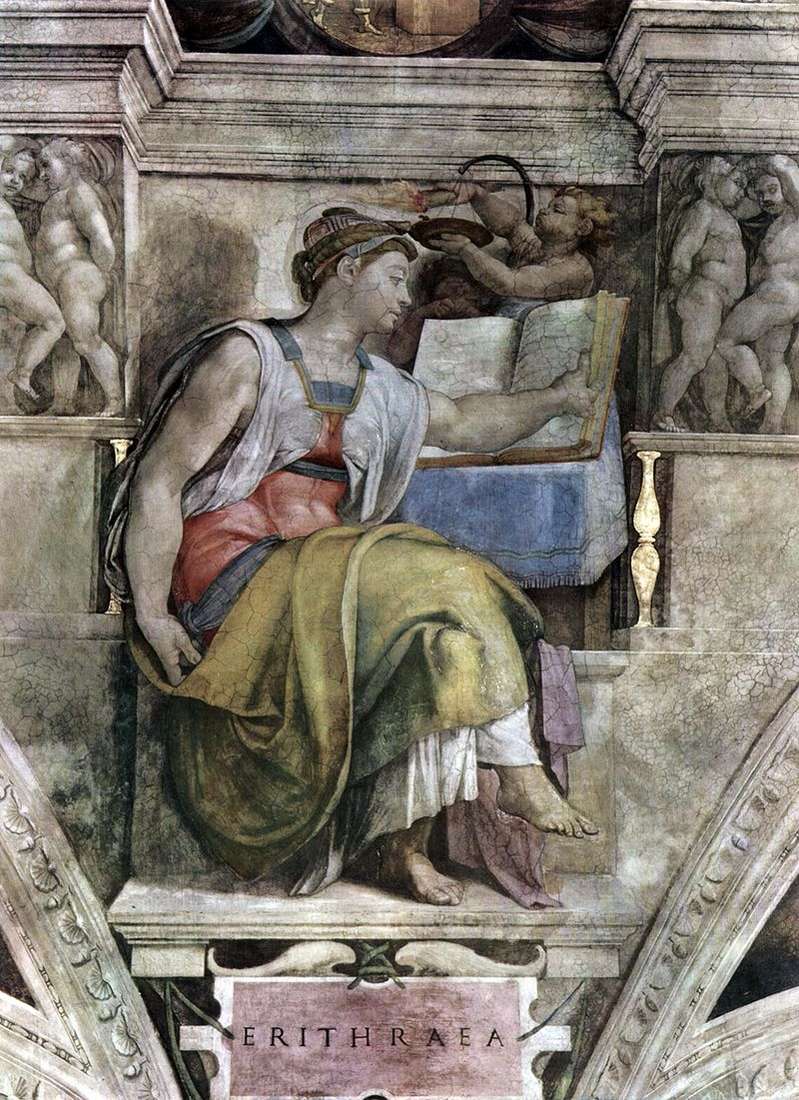 Eritrean Sibyl (fresco) by Michelangelo Buonarroti
Eritrean Sibyl (fresco) by Michelangelo Buonarroti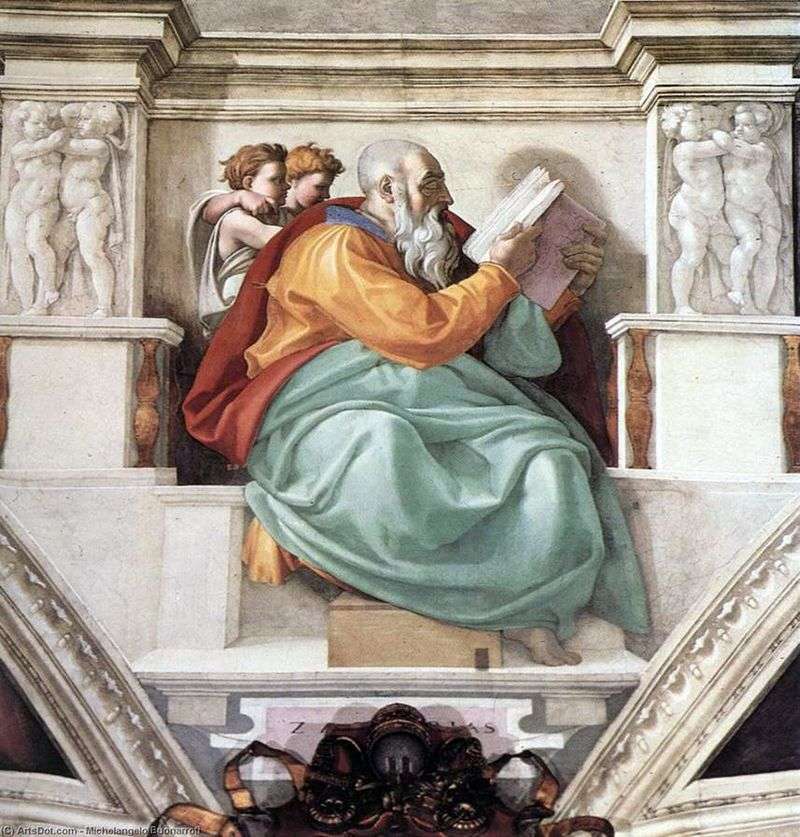 The Prophet Zechariah, Father of John the Baptist (Fresco) by Michelangelo Buonarroti
The Prophet Zechariah, Father of John the Baptist (Fresco) by Michelangelo Buonarroti Interior of the Sistine Chapel by Michelangelo Buanarrotti
Interior of the Sistine Chapel by Michelangelo Buanarrotti